 Get your 30 day trial NOW!
Get your 30 day trial NOW!
Contents
- Basic guidelines
- First steps with SEOlyze.com
- Optimisation of existing content
- Optimisation of new content � WDF*IDF Editor
Basic guidelines
There are some basic guidelines for WDF/IDF optimisation that one should be acquainted with, as is the case for all areas of online marketing. WDF/IDF optimisation is no magic bullet for bad rankings, HOWEVER, by using a thorough optimisation, it is possible to achieve a significant improvement in SERPs. Nevertheless, it should be noted that WDF/IDF optimisation on its own is not sufficient; other On-Page activities such as URL structure, title, HTML setup etc. are highly recommended to achieve maximum results.
Proof
How to prove to the search engine that your content is relevant for the specific query
Search engines such as Google are continually improving in terms of semantics and thus enable an improved classification of content belonging to a certain query. There are more or less important side queries for every query which describe the content in question and are a useful supplement to the query. In many cases, these side queries can be defined and verified in the analysis by mere common sense or general knowledge. For instance the query "search engine optimisation" will produce items such as "search engine", "SEO", "Google", "optimisation" or even "webpage" to complement the subject and should therefore be included in the respective text.
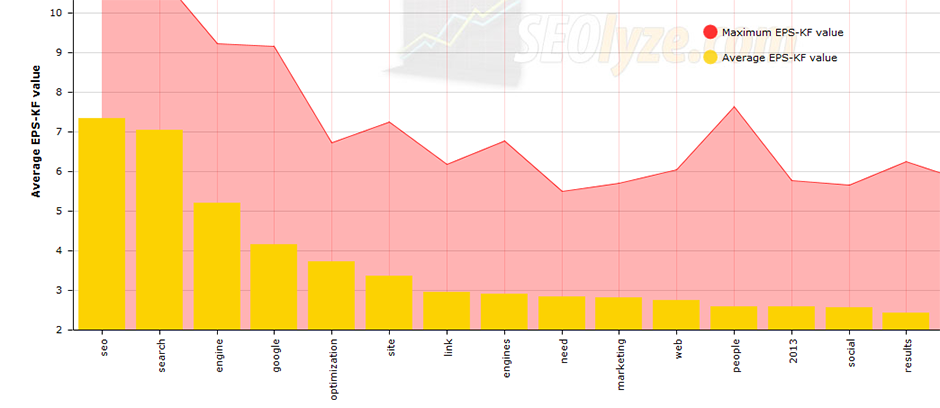
Anti-Spam
How to not send signals that a search engine may interpret as spam
Ever since the massive updates by Google in 2011/2012 everone should be aware of the fact, that there is no future for spam. Google is continually improving to detect spam and its anti-spam measures are becoming increasingly thorough. For this reason, content should not send out signals that could be interpreted or identified as spam.
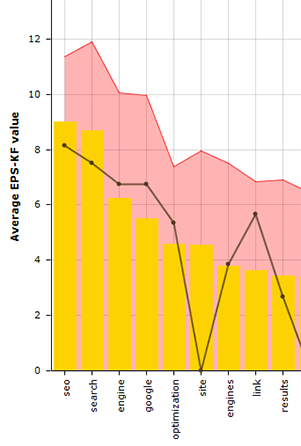
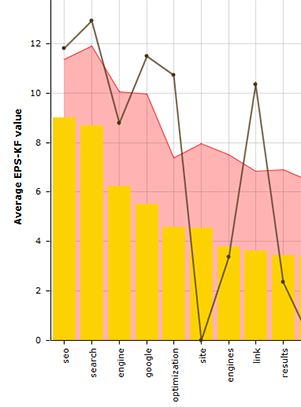
Diversity
How to stand out of the crowd and create unique content
Search engines are interested in providing their users with a broad spectrum of suitable webpages. This means that 10 pages with identical content will not be portrayed and that � if possible � every project should focus on a specific subject area. Search engines are trying to present only one expert for every subcategory of a topic. For this reason it is vital to choose a focal point within a wider subject and to present this focal point rather comprehensively and in great detail.
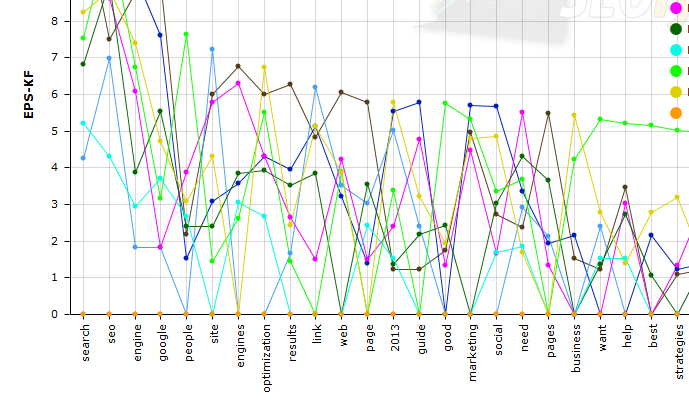
First steps with SEOlyze.com

Keyword � For which main keyword do I want to rank?
The main keyword constitutes the base of the analysis. With the main keyword the context, which is identical to the projects to be analysed, is defined. Any combination in the range of 1-word to n-word terms can be stated
Google version � In which country do I want my project to be listed?
Apart from the keyword the preferred Google version is the second mandatory item taht has to be filled in. Any language version of Google can be stated by simply entering the TLD-ending of the preferred country (de,at,ch,co.uk,etc.).
Reference � Which project do I want to be analysed as a reference and highlighted?
The figures of your own project or document are of course of primary interest. Iit is possible to state a specific reference page in the analysis that will be analysed in addition to the projects that are automatically extracted. Furthermore, this project will be highlighted in all analyses and evaluations.
Filter � Which words do I consider irrelevant?
Depending on the subject area, it is possible that words, which have no or only a limited importance for the specific term, are automatically analysed. Any word can be filtered from the analysis by using commas to separate them. The usual stop words such as "the" are automatically filtered by SEOlyze.com.
Optimisation of existing content
Define reference
At the beginning of the analysis a main keyword, a Google version and your own reference page have to be entered. Your reference page should be that URL for which you would like to place your chosen keyword on the SERPs. It can be the homepage or any other subpage of your project.
Evaluate competitors and compare length of content

In a first quick overview the competitors can already be estimated and evaluated in advance. For this purpose, indicators for visibility, indicated pages and backlink data for every project as well as the length of the texts are listed. With this data an estimate of how strong your competitors really are can be made quickly. One of the most important indicators is that on text length: the length of your text should be compared and adapted to that of your competetitors' texts. For example, if your competitors have a content of about 2000 words on average, your own document should be roughly of the same dimension.
Check quantity of keywords
With this table you can get a quick overview of where your own project may have deficits in terms of keywords. Which keywords are used especially often by your immediate competitors? Which of these do you not have in your content or in a much lower quantity?

Check proof keywords
Every subject is described by different concepts, ideal results can therefore be achieved in an infinite number of ways. You will aim at presenting the search engine with just these concepts that ideally fit your subject in order to show that your content describes the subject area most accurately. By using different proof filters the top concepts for every subject area can be directly extracted. Moreover, it can be established at a glance if your project contains the most important proof keys or if certain concepts are still missing and need to be added.
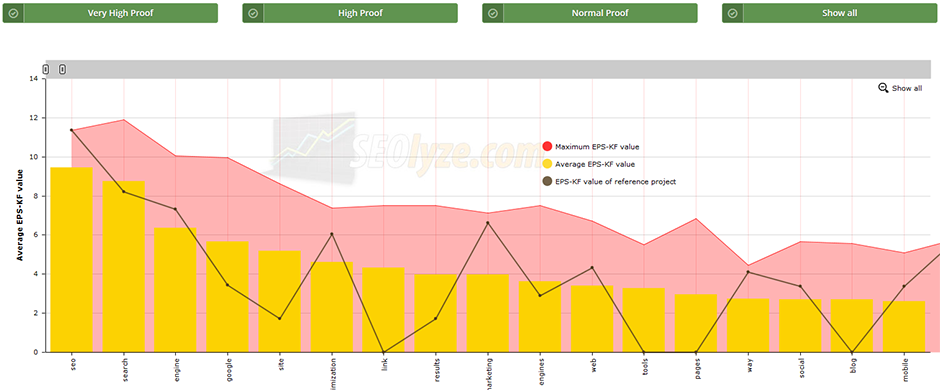
Check diversity
As already mentioned at the beginning of this page, a search engine always aims at providing the user with a broad spectrum of different information to one specific topic. For this reason it is especially important not to cover all areas of a certain subject but to specialise in one aspect of this subject area and act as a specialist. From the evaluations represented by an envelope curve it can be determined whether your project is positioned appropriately or whether certain subject areas still need to be dealt with in more detail.
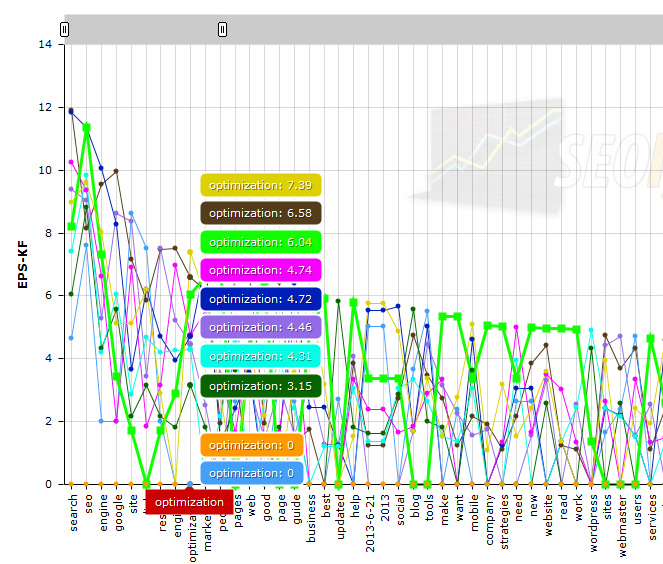
Optimisation of new content � WDF*IDF Editor
Insert your own text
Of course there is the possibility at SEOlyze.com to check and analyse content before it is published. For this particular purpose we offer an WDF*IDF Editor. After a keyword an a Google version are stated, the entire surroundings are analysed. In a following step text can be entered and included into the analysis. All textual changes can be reviewed and checked immediately and directly in the WDF*IDF Editor.


